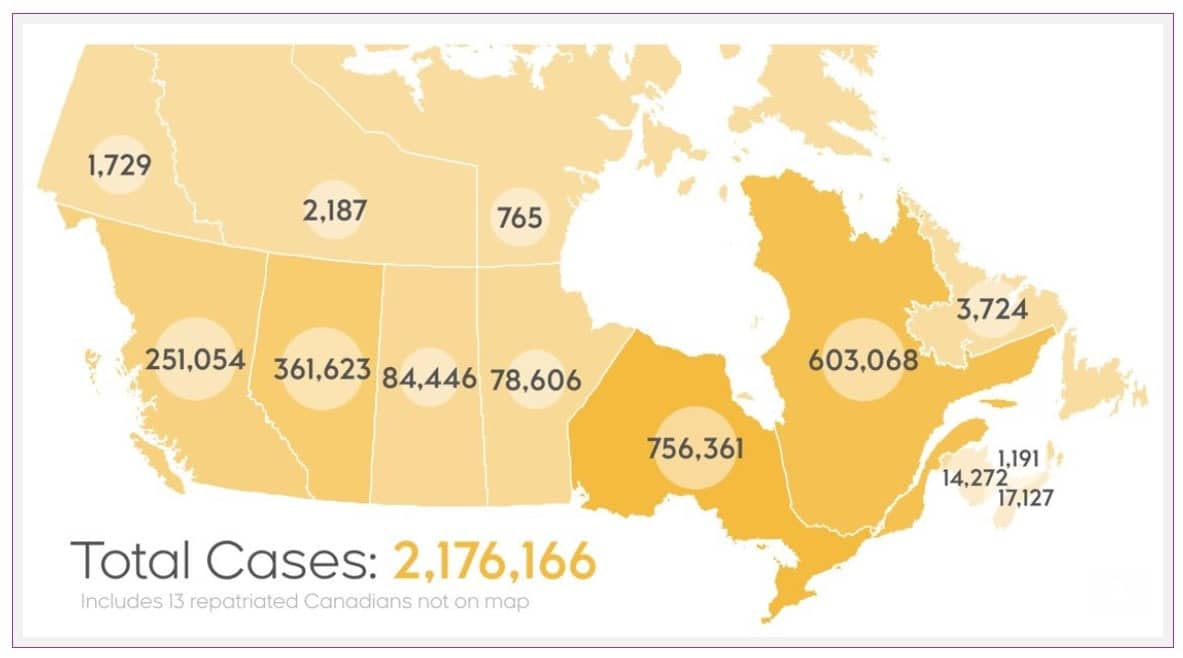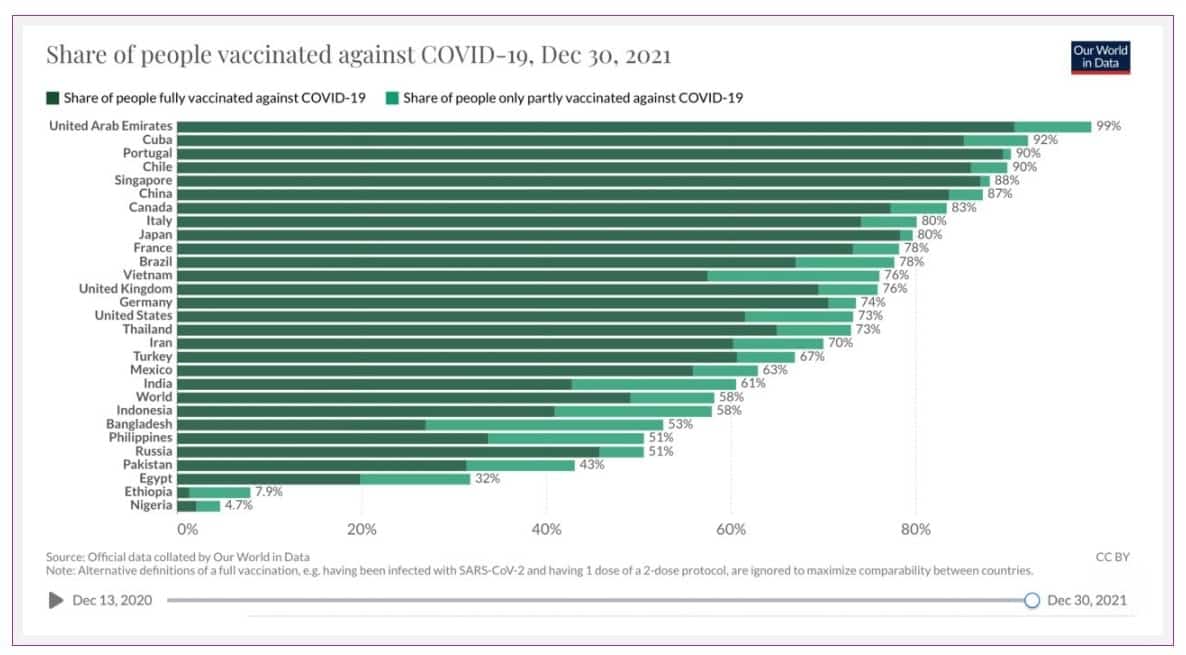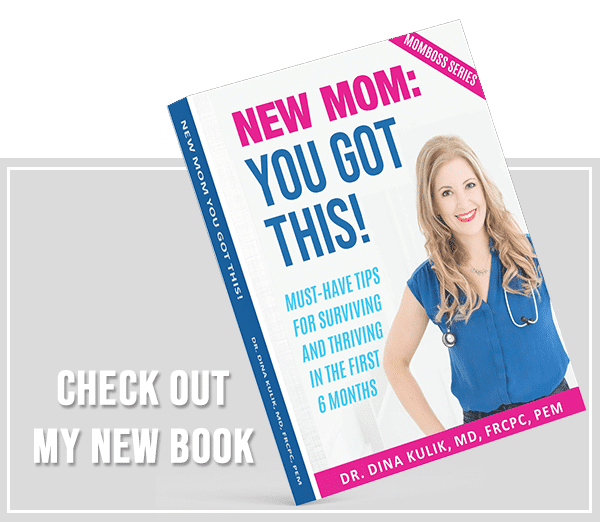Omicron, testing, and the plan for back to school!
Hello friends!
Happy New Year!
I hope you had a restful and joyful holiday season and much-needed rest.
We enjoyed some quality family time, and I feel (slightly) recuperated.
Let’s review the bad news, the good news, the most common questions of the week and my weekly silver lining.
Dr. Dina, what is the bad news?
There have been over 260 MILLION cases of COVID-19 reported worldwide, with almost 5.5 million deaths.
We have seen almost 2.1 million cases in Canada and over 30,200 deaths.

As cases of Omicron continue to rise, PCR testing backlogs continue to frustrate and worry us. More sick people lead to more desire to test, and across the country, people are finding it challenging to confirm whether they have COVID.
The seven-day average for COVID cases in Ontario is well above 12,000. For context, that number was less than 5,000 last week and less than 2,000 the week prior.
The Ministry of Health confirmed that Ontario’s COVID positivity rate is 30%.
Many provinces continue to break records in COVID cases. In Ontario, we are above 15,000 cases a day. This is likely a significant underestimate as many people cannot get tested or are using rapid tests for confirmation, which isn’t counted in the provincial numbers. Quebec has more than 13,000 a day.
Thousands of Quebec healthcare workers are off sick with COVID themselves. Some people continue to work, despite testing positive to prevent further disruptions to healthcare provision. This makes me very nervous and sad.
Watch Dr. Dina on CTV News
discussing Ontario’s back-to-school plans.
In Israel, 150 health care workers received a fourth COVID vaccine dose. The trial is looking at whether a second round of boosters after the primary series (of two shots) will help prevent against Omicron. Researchers say their data will be submitted to the Israeli Ministry of Health in 2 weeks.
According to the World Health Organization, COVID cases rose 11% worldwide last week alone. This corresponds to around 5 MILLION NEW CASES in a week.
The most significant increases were in North and South America, representing a 40% rise, or 1.4 MILLION new cases. Europe saw a 3% rise, and Africa, a 7% rise.
Many countries in Asia have avoided a massive rise in cases so far, likely from strict quarantine rules and strict mask guidelines.
What is the good news?
Over 9 BILLION COVID vaccines have been given worldwide, representing 58% of people receiving the first dose, and 49% are fully vaccinated (2 doses).

In Canada, 86% of people have received their first dose, and 81% have received two or more doses.
Most common questions of the week
Are schools opening in January?
Update: Ontario announced today that all publicly funded and private schools will move to remote learning starting January 5th until at least January 17, 2022.
Last week, we heard that Ontario is delaying the return to school until January 5 due to the recent spike in cases. Apparently, this delay will allow time to deploy additional safety measures, such as providing non-fit-tested N95 masks for staff in schools and child care. The government also pledged to send an extra supply of high-quality three-ply cloth masks free of charge to students.
I highly recommend not using cloth masks, which are not nearly as protective against Omicron. If KN95 are accessible to you, please consider these, or otherwise good-quality, well-fit, medical masks. Consider wearing a new medical mask underneath yesterday’s mask to make two layers. I recognize these are expensive and not eco-friendly, but they work better. I think free, high-quality masks should be provided to all students and anyone who works in a school to keep kids and educators safer.
An additional 3,000 HEPA filter units will be added to the existing 70,000 units currently in Ontario schools.
Only low-contact indoor sports and ‘safe’ extra-curricular activities will be permitted once kids return.
Several provinces have prolonged the winter break, and others have switched to virtual learning starting this week.
Who should get tested for COVID now?
Last week, Chief Medical Officer of Health Dr. Kieran Moore announced that Ontario would be adjusting testing guidelines due to PCR test shortages across the province.
PCR tests are now only available for symptomatic high-risk individuals, those who work in the highest risk settings, and vulnerable populations.
These include symptomatic people in the following groups:
- Hospitalized patients;
- Patient-facing health care workers;
- Staff, residents, care providers, and visitors in hospitals and congregate living settings such as long-term-care homes and First Nation eldercare lodges;
- Underhoused or homeless individuals;
- People from First Nation, Metis, and Inuit communities and people traveling to these communities to work;
- Symptomatic students and education staff who received PCR self-testing kids through school; and,
- High-risk contacts in the contact of confirmed or suspected outbreaks in high-risk settings such as hospitals, long-term care, and retirement homes.
People in the general public with mild symptoms are being asked not to test. Testing for asymptomatic contacts is generally no longer recommended, except for high-risk contacts as above.
Individuals with COVID symptoms should consider themselves positive and should follow isolation guidelines.
Positive rapid antigen tests will no longer require PCR confirmation.
How long should I isolate for?
According to Ontario Public Health, individuals with confirmed COVID-19 should isolate for:
- Five days if fully vaccinated or under age 12.
- Seven days for those who work in high-risk settings.
- Ten days for unvaccinated or immunocompromised individuals
- Symptoms should be improving for at least 24 hours before leaving isolation.
They based these new recommendations on evidence that “generally healthy people with COVID-19 are most infectious in the two days before and three days after symptoms develop.”
This was based on guidance first adopted by the CDC. The CDC is currently reviewing their data and may change their recommendation.
Anyone with COVID-19-related symptoms should assume they have the virus and isolate.
What do we know about antibodies against Omicron?
A team of researchers identified antibodies that can neutralize Omicron and other COVID variants. The study published in Nature showed that their antibodies could target the spike proteins and continue to work even if the virus mutates. By targeting neutralizing antibodies, it may be possible to design vaccines and other treatments against COVID, even if it mutates further.
Researchers created a pseudovirus, a disabled virus that cannot be replicated, producing spike proteins. Then they made pseudoviruses that had spike proteins similar to Omicron and other strains of COVID. They wanted to see how well different versions of the spike protein could bind to cells to lead to infection.
They found that people who received two doses of an mRNA vaccine from Moderna or Pfizer, or the AstraZeneca vaccine, had some neutralizing antibodies. But, their ability to neutralize Omicron, in particular, was reduced compared to other strains by 20 and 40x.
Finding that antibodies can neutralize various COVID strains may help researchers target vaccines and antibody treatments more effectively and quickly.
Each vaccine manufacturer has announced they are looking to make Omicron-specific vaccines and will try to create new vaccines targeting whatever other new strains come around.
My silver lining
This was not the holiday season we envisioned. This Summer and Fall felt reasonably normal, and many of us were excited about spending time with friends and family, traveling, and celebrating ‘normally.’ Alas.
Despite the new stresses we all face, I am thankful for my health and the health of my family. I am grateful for the opportunity to reflect on my blessings the last few days and savor some undivided family time.
Happy New Year, friends!
To health and happiness,








![[Dr. Dina News] IMPORTANT UPDATE re. VIRTUAL CARE](https://drdina.ca/wp-content/uploads/2021/01/dr-dina-kulik-kids-and-virtual-care-1a-400x250.jpg)
![[Dr. Dina News] COVID-19 Vaccine for Infants and Young Children.](https://drdina.ca/wp-content/uploads/2021/04/dr-dina-kulik-kids-and-vaccines-400x250.jpg)
![[Dr. Dina News] COVID-19 Vaccine for Infants and Young Children.](https://drdina.ca/wp-content/uploads/2022/04/DRD-1-400x250.jpg)






